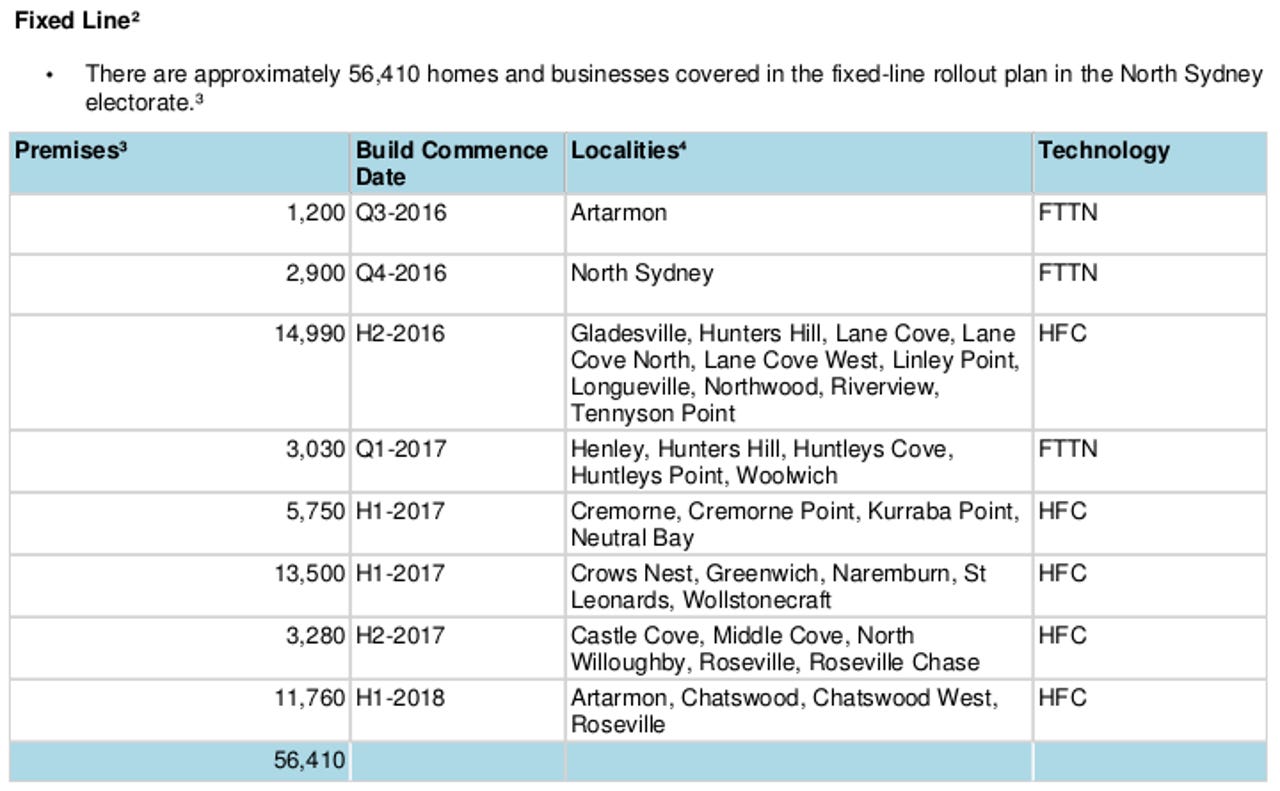NBN rollout info by electorate released by Communications Department

The Australian Department of Communications has published an extensive document providing National Broadband Network (NBN) rollout statistics by electorate, with end users now able to tell when the network might reach them.
The document, released in response to a Freedom of Information request, provides exhaustive details on when each region within an electorate will have NBN build commence and by what network technology, as well as how many premises are ready for service (RFS), have an active NBN connection, and will be reached by the NBN.

For instance, the North Sydney electorate had 10,235 premises RFS as of November 25, 2016, and 4,182 with an active NBN connection.
Making up these numbers, 7,424 brownfields premises had NBN services available; 2,139 brownfields premises had an active service; 2,811 new development lots or premises had services available; and 2,042 new development lots or premises had an active service.
One premises had an active interim satellite service (ISS) -- which was shut down last month -- although no premises within North Sydney are eligible to be connected by the new Sky Muster satellite service, or by fixed-wireless.
As of the end of November, 7,140 premises were under construction in the electorate -- 7,000 brownfields and 140 new developments -- with NBN forecasting that all 56,410 premises in the North Sydney electorate will be either RFS or under construction by the end of September next year.
A breakdown by suburb saw build commence for 1,200 premises in Artarmon for fibre-to-the-node (FttN) network technology in Q3 2016; 2,900 premises in North Sydney for FttN in Q4 2016; and 14,990 premises in Gladesville, Hunters Hill, Lane Cove, Lane Cove North, Lane Cove West, Linley Point, Longueville, Northwood, Riverview, and Tennyson Point for hybrid fibre-coaxial (HFC) network technology in the first half of 2016.
Latest Australian news
Build is also due to commence for 3,030 premises in Henley, Hunters Hill, Huntleys Cove, Huntleys Point, and Woolwich for FttN by the Q1 2017; 5,750 premises in Cremorne, Cremorne Point, Kurraba Point, and Neutral Bay for HFC by the first half of 2017; 13,500 premises in Crows Nest, Greenwich, Naremburn, St Leonards, and Wollstonecraft for HFC by the first half of 2017; 3,280 premises in Castle Cove, Middle Cove, North Willoughby, Roseville, and Roseville Chase for HFC by the second half of 2017; and 11,760 premises in Artarmon, Chatswood, Chatswood West, and Roseville for HFC in the first half of 2018.
NBN noted that rollout regions with less than 20 percent of premises and fewer than 1,000 premises in the electorate of North Sydney were not included in the report.
The report covers every electorate in Australia.
"The figures contained in this report have been provided in confidence by NBN and are for internal use only," it states.
NBN provides some information on when a premises will be reached by the NBN; last month, it added a new functionality to its rollout checker, allowing consumers to find out when they can contact retail service providers to connect their premises to the network instead of when the network will be built up in their area.
NBN also added "ready for service" areas to its rollout map in November, enabling most consumers to search the map for when they will be connected and by what network technology -- excluding premises being serviced by HFC.
NBN had said in December that it was aiming to add HFC properties to its searchable rollout map sometime during 2017, after allowing consumers to see when addresses are in the planning stage.
Those receiving fibre-to-the-premises, fibre-to-the-node, fibre-to-the-distribution-point, and fibre-to-the-basement will not know which fibre-copper mix they will receive until closer to their rollout completion date.